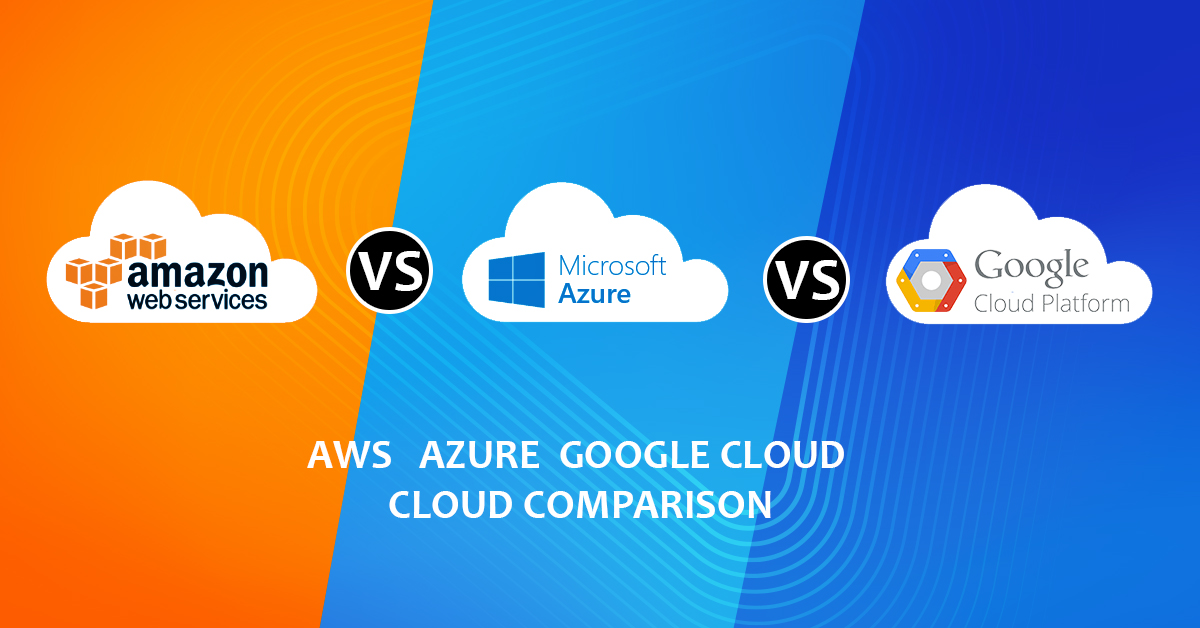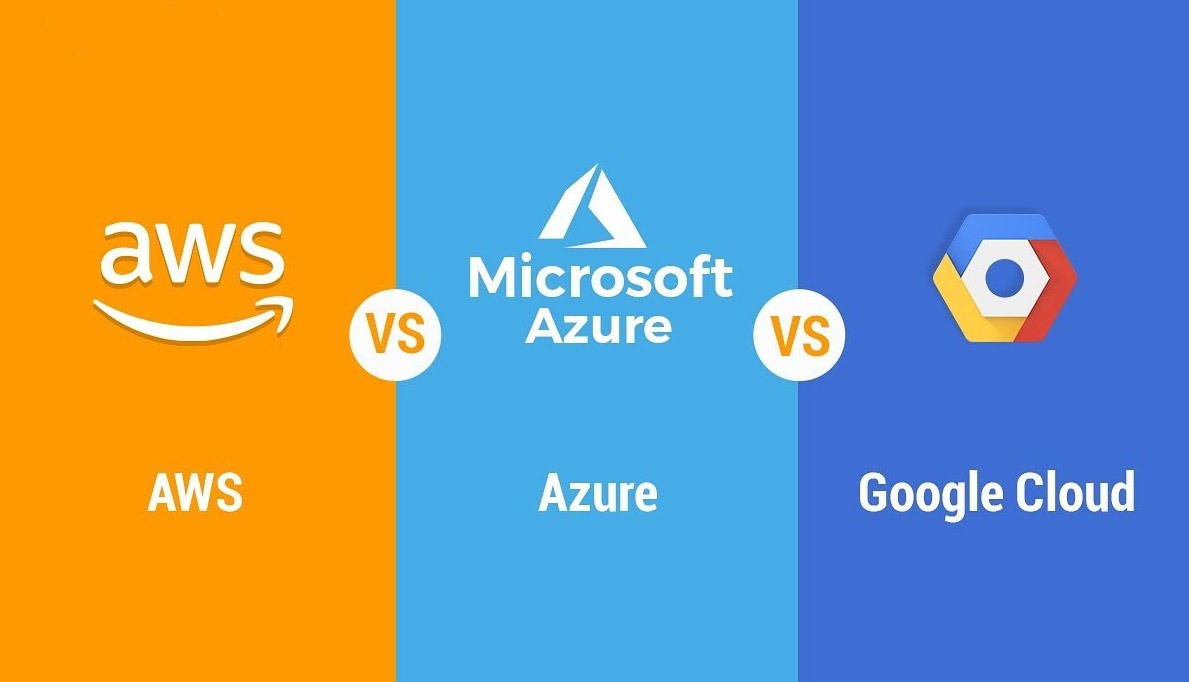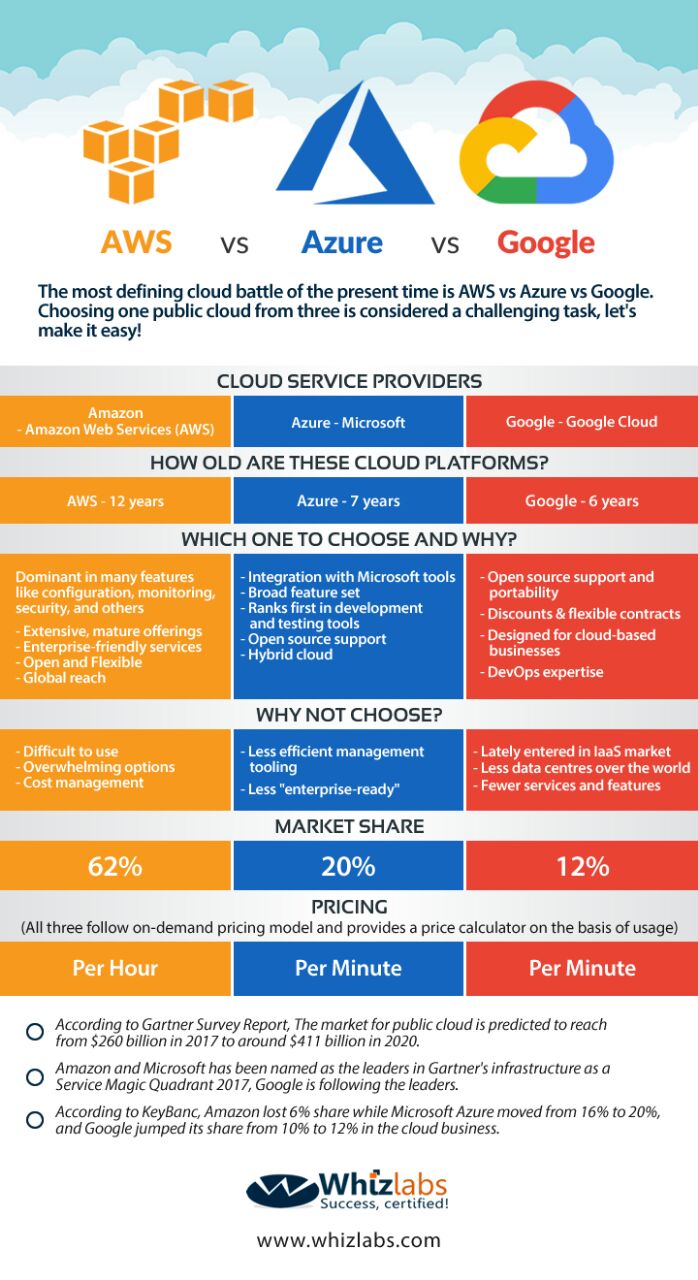Introduction: Understanding the Cloud Computing Landscape
Cloud computing has revolutionized the way modern businesses operate by providing on-demand access to computing resources over the internet. Two of the leading cloud service providers in this space are Amazon Web Services (AWS) and Microsoft Azure, which together hold a significant portion of the market share. This article will provide a comprehensive comparison of AWS and Azure, helping businesses make an informed decision when choosing a cloud service provider.
AWS Overview: Features and Benefits
Amazon Web Services (AWS) is a comprehensive cloud computing platform that provides a wide range of services, including computing, storage, databases, and analytics. AWS is known for its scalability, reliability, and security, making it a popular choice for businesses of all sizes. Some of the key features and benefits of AWS include:
- On-demand computing resources: AWS allows businesses to quickly and easily scale up or down their computing resources as needed, without the need for upfront investment or long-term commitments.
- Global infrastructure: AWS has a global network of data centers, enabling businesses to deploy their applications in multiple regions for low-latency and high-availability.
- Security: AWS provides robust security features, such as encryption, firewall protection, and access control, to help businesses protect their data and applications.
- Cost-effective: AWS operates on a pay-as-you-go pricing model, allowing businesses to only pay for the resources they use, reducing costs and increasing efficiency.
- Integration: AWS integrates seamlessly with other Amazon services, such as Alexa, S3, and DynamoDB, providing businesses with a wide range of tools and capabilities to build and deploy their applications.
Some of the key services offered by AWS include:
- Compute: AWS provides a range of computing services, such as EC2, Lambda, and Elastic Beanstalk, enabling businesses to run their applications in the cloud.
- Storage: AWS offers a variety of storage services, such as S3, EBS, and Glacier, providing businesses with flexible and secure storage options for their data.
- Databases: AWS provides a range of database services, such as RDS, DynamoDB, and Redshift, enabling businesses to store, manage, and analyze their data in the cloud.
- Analytics: AWS offers a range of analytics services, such as Kinesis, QuickSight, and Elasticsearch, enabling businesses to process and analyze large volumes of data in real-time.
Azure Overview: Features and Benefits
Microsoft Azure is a comprehensive cloud computing platform that provides a wide range of services, including virtual machines, SQL databases, and machine learning. Azure is known for its flexibility, scalability, and integration with other Microsoft products, making it a popular choice for businesses of all sizes. Some of the key features and benefits of Azure include:
- Hybrid integration: Azure provides seamless integration with on-premises infrastructure, enabling businesses to build hybrid cloud solutions that meet their specific needs.
- Security: Azure provides robust security features, such as encryption, multi-factor authentication, and access control, to help businesses protect their data and applications.
- Cost-effective: Azure operates on a pay-as-you-go pricing model, allowing businesses to only pay for the resources they use, reducing costs and increasing efficiency.
- Global infrastructure: Azure has a global network of data centers, enabling businesses to deploy their applications in multiple regions for low-latency and high-availability.
- Integration: Azure integrates seamlessly with other Microsoft products, such as Office 365, Dynamics, and Power BI, providing businesses with a wide range of tools and capabilities to build and deploy their applications.
Some of the key services offered by Azure include:
- Compute: Azure provides a range of computing services, such as Virtual Machines, App Service, and Azure Functions, enabling businesses to run their applications in the cloud.
- Storage: Azure offers a variety of storage services, such as Blob Storage, File Storage, and Disk Storage, providing businesses with flexible and secure storage options for their data.
- Databases: Azure provides a range of database services, such as SQL Database, Cosmos DB, and Azure Database for MySQL, enabling businesses to store, manage, and analyze their data in the cloud.
- Machine Learning: Azure provides a range of machine learning services, such as Azure Machine Learning, Azure Cognitive Services, and Azure Bot Service, enabling businesses to build intelligent applications that can learn from data and make predictions.
Head-to-Head Comparison: AWS vs Azure
When it comes to choosing a cloud service provider, businesses often find themselves comparing AWS and Azure. Both platforms offer a wide range of services and benefits, but they differ in several key areas. Here’s a head-to-head comparison of AWS and Azure based on pricing, performance, security, and scalability:
| Factor | AWS | Azure |
|---|---|---|
| Pricing | AWS operates on a pay-as-you-go pricing model, with no upfront costs or long-term commitments. However, the cost can add up quickly for businesses that use a lot of resources. | Azure also operates on a pay-as-you-go pricing model, with flexible pricing options and discounts for long-term commitments. Azure also offers a free tier for certain services. |
| Performance | AWS is known for its high performance and reliability, with fast and efficient computing resources. AWS also offers a wide range of services and tools for optimizing performance. | Azure also offers high performance and reliability, with fast and efficient computing resources. Azure provides a range of services and tools for optimizing performance, including Azure Autoscale and Azure Traffic Manager. |
| Security | AWS provides robust security features, such as encryption, multi-factor authentication, and access control. AWS also complies with various industry standards and regulations. | Azure provides robust security features, such as encryption, multi-factor authentication, and access control. Azure also complies with various industry standards and regulations, and offers Azure Security Center for threat protection. |
| Scalability | AWS offers high scalability, with the ability to quickly and easily add or remove resources as needed. AWS also provides a range of tools for managing and optimizing scalability. | Azure also offers high scalability, with the ability to quickly and easily add or remove resources as needed. Azure provides a range of tools for managing and optimizing scalability, including Azure Autoscale and Azure Load Balancer. |
In general, both AWS and Azure offer similar features and benefits, with slight differences in pricing, performance, security, and scalability. Businesses should consider their specific needs and goals when choosing a cloud service provider.
How to Choose Between AWS and Azure
Choosing between AWS and Azure can be a challenging decision for businesses. Both platforms offer a wide range of services and benefits, and both have their own strengths and weaknesses. To make an informed decision, businesses should consider the following factors:
- Business needs: The first step in choosing a cloud service provider is to identify the specific needs of the business. This includes the type and amount of computing resources required, the desired level of security and compliance, and the need for specific services such as machine learning or data analytics.
- Budget: The cost of cloud services can vary significantly between AWS and Azure, depending on the specific services and resources required. Businesses should carefully evaluate the pricing models of both platforms and consider any long-term commitments or discounts that may be available.
- Technical expertise: The complexity of cloud services can also vary significantly between AWS and Azure. Businesses should consider the level of technical expertise available in-house, and whether the chosen platform provides the necessary tools and resources for managing and optimizing cloud services.
- Integration: Businesses should also consider the integration between the chosen cloud platform and any existing infrastructure or applications. This includes the ability to migrate data and applications between platforms, and the level of support for hybrid cloud environments.
- Future growth: Finally, businesses should consider the future growth and evolution of the chosen cloud platform. This includes the availability of new services and features, the level of investment in research and development, and the overall market position and financial stability of the cloud service provider.
To help businesses make an informed decision, here is a step-by-step guide for choosing between AWS and Azure:
- Identify the specific needs of the business, including computing resources, security and compliance requirements, and desired services.
- Evaluate the pricing models of both AWS and Azure, and consider any long-term commitments or discounts that may be available.
- Assess the level of technical expertise available in-house, and whether the chosen platform provides the necessary tools and resources for managing and optimizing cloud services.
- Consider the integration between the chosen cloud platform and any existing infrastructure or applications, including the ability to migrate data and applications between platforms.
- Evaluate the future growth and evolution of the chosen cloud platform, including the availability of new services and features, the level of investment in research and development, and the overall market position and financial stability of the cloud service provider.
By following these steps, businesses can make an informed decision about the right cloud service provider for their specific needs and goals.
Real-World Use Cases: AWS vs Azure
When it comes to choosing between AWS and Azure, businesses often want to know how these cloud service providers have helped other organizations. Here are some real-world use cases that highlight the benefits and challenges of implementing AWS and Azure:
Use Case 1: Media Company Migrates to AWS
A media company wanted to migrate its on-premises infrastructure to the cloud to improve scalability and reduce costs. After evaluating several cloud service providers, the company chose AWS for its wide range of services, including EC2 for computing, S3 for storage, and RDS for databases. The migration was successful, and the company was able to reduce its IT costs by 30% while improving scalability and reliability.
Use Case 2: Retailer Adopts Azure for Data Analytics
A retailer wanted to improve its data analytics capabilities to gain insights into customer behavior and optimize its marketing campaigns. The company chose Azure for its machine learning and data analytics services, including Azure Machine Learning and Azure Data Lake. The implementation was successful, and the company was able to improve its data analytics capabilities, resulting in a 10% increase in sales.
Use Case 3: Healthcare Provider Uses AWS for Disaster Recovery
A healthcare provider wanted to implement a disaster recovery solution to ensure business continuity in case of an outage. The provider chose AWS for its disaster recovery services, including AWS Storage Gateway and AWS Backup. The implementation was successful, and the provider was able to reduce its disaster recovery time from days to hours, ensuring business continuity and data protection.
Use Case 4: Manufacturer Adopts Azure for IoT
A manufacturer wanted to implement an Internet of Things (IoT) solution to improve its manufacturing processes and reduce downtime. The company chose Azure for its IoT services, including Azure IoT Hub and Azure Stream Analytics. The implementation was successful, and the company was able to improve its manufacturing processes, resulting in a 5% increase in productivity.
These use cases demonstrate the benefits and challenges of implementing AWS and Azure in real-world scenarios. Businesses should carefully evaluate their specific needs and goals when choosing a cloud service provider and consider the potential benefits and challenges of implementing these platforms.
Future Trends: AWS vs Azure
As cloud computing continues to evolve, businesses need to stay up-to-date with the latest trends and technologies. Here are some future trends in cloud computing and how AWS and Azure are positioned to address them:
Edge Computing
Edge computing involves processing data closer to the source, rather than in a centralized data center. This can help reduce latency, improve performance, and reduce bandwidth costs. Both AWS and Azure offer edge computing services, including AWS Outposts and Azure Stack. These services allow businesses to run cloud services on-premises or in remote locations, providing a seamless hybrid cloud experience.
Quantum Computing
Quantum computing is a new computing paradigm that uses quantum bits, or qubits, to perform complex calculations. This can help solve problems that are currently unsolvable with classical computers. Both AWS and Azure offer quantum computing services, including AWS Braket and Azure Quantum. These services allow businesses to experiment with quantum computing and develop new applications.
Serverless Architecture
Serverless architecture involves building and running applications without having to manage servers. This can help reduce costs, improve scalability, and accelerate development. Both AWS and Azure offer serverless architecture services, including AWS Lambda and Azure Functions. These services allow businesses to build and run applications without having to worry about infrastructure.
Artificial Intelligence and Machine Learning
Artificial intelligence (AI) and machine learning (ML) are becoming increasingly important in cloud computing. These technologies can help businesses automate processes, improve decision-making, and develop new applications. Both AWS and Azure offer AI and ML services, including AWS SageMaker and Azure Machine Learning. These services allow businesses to build, train, and deploy machine learning models in the cloud.
By staying up-to-date with these future trends, businesses can ensure they are making the most of their cloud investments and staying ahead of the competition. Both AWS and Azure are well-positioned to address these trends, providing businesses with a wide range of services and tools to build, deploy, and manage applications in the cloud.
Conclusion: AWS vs Azure – Making the Right Choice
Choosing the right cloud service provider is a critical decision for modern businesses. AWS and Azure are two leading cloud service providers that offer a wide range of services and benefits. By understanding the key features, benefits, and differences between AWS and Azure, businesses can make an informed decision that aligns with their specific needs and goals.
When comparing AWS and Azure, businesses should consider factors such as pricing, performance, security, and scalability. They should also evaluate their business needs, budget, and technical expertise to determine which platform is the best fit.
Real-world use cases demonstrate the benefits and challenges of implementing AWS and Azure. By studying these examples, businesses can gain insights into the practical applications of these cloud services and learn how to overcome common obstacles.
Looking ahead, emerging technologies such as edge computing, quantum computing, and serverless architecture are shaping the future of cloud computing. AWS and Azure are well-positioned to address these trends, providing businesses with a wide range of services and tools to build, deploy, and manage applications in the cloud.
In conclusion, choosing the right cloud service provider is a critical decision that requires careful consideration and evaluation. By understanding the key features, benefits, and differences between AWS and Azure, businesses can make an informed decision that aligns with their specific needs and goals. We encourage businesses to consider their unique requirements and choose the cloud service provider that best meets their needs.







